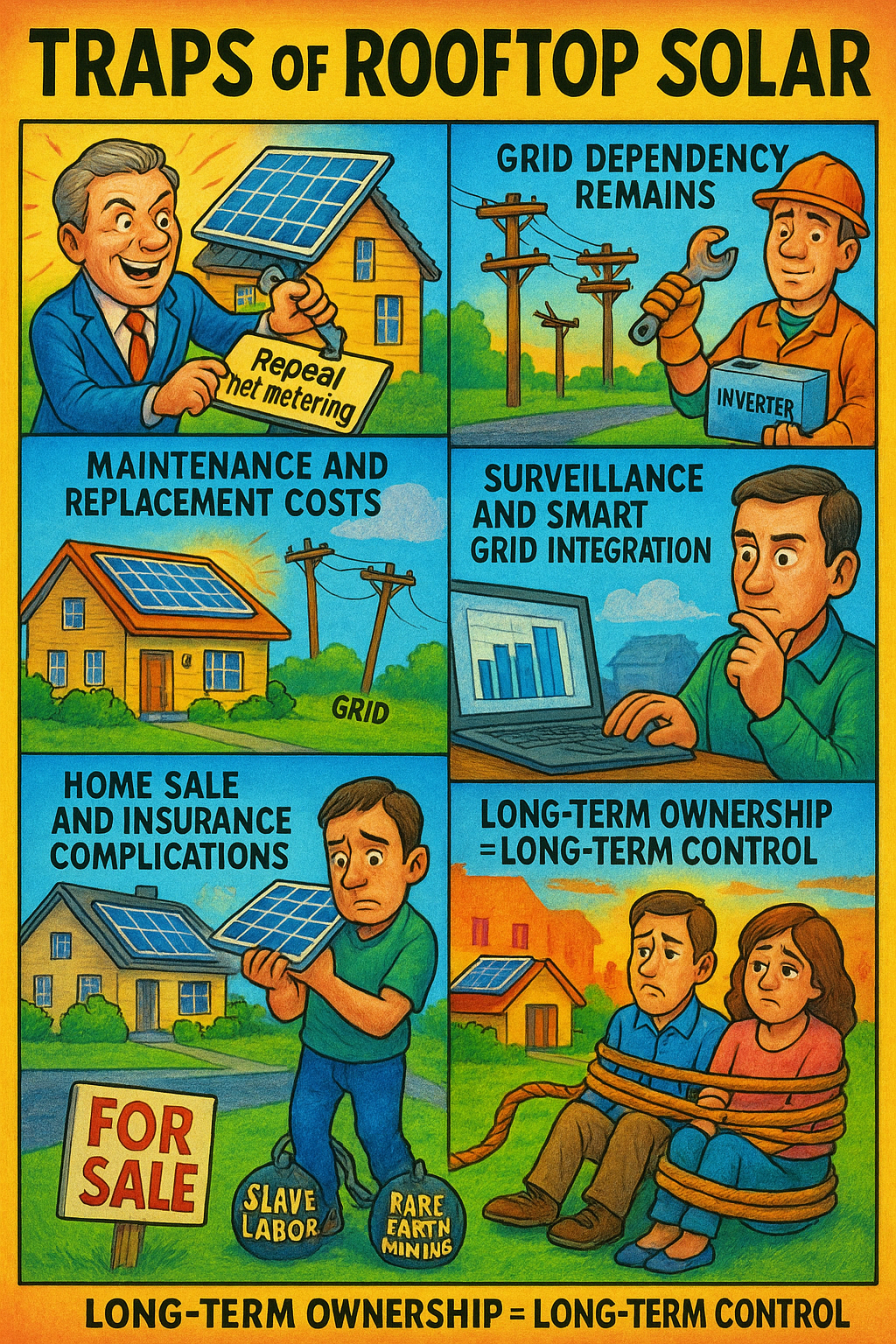The many Traps of Rooftop Solar
Rooftop solar is often marketed as a sustainable, decentralized energy solution — but in the long term, it can become a trap due to a combination of economic, technological, political, and grid-dependency factors. Here’s how:
1. Net Metering and Policy Manipulation
- Initial Incentive: Utilities pay rooftop solar owners for excess energy sent back to the grid (net metering).
- The Trap: These policies are being repealed or weakened (e.g. California NEM 3.0 slashed compensation by 75%), meaning long-term returns collapse.
- Reality: You finance a 20-year investment on assumptions that can change overnight with legislation.
2. Grid Dependency Remains
- Rooftop solar only works during the day. At night or during grid outages, unless you invest heavily in battery storage, your solar system shuts down for safety.
- Batteries are expensive, degrade, and require rare earth materials — introducing another dependency.
- Result: You still rely on the utility grid and are not energy sovereign.
3. Maintenance and Replacement Costs
- Solar panels degrade: ~0.5%–1% efficiency loss per year.
- Inverter failure (the heart of the system) often occurs around years 8–12, costing thousands to replace.
- Roof repairs become complex and expensive with solar installed — panels must be removed and reinstalled.
4. Surveillance and Smart Grid Integration
- Most solar systems come with smart inverters that connect to the grid and transmit data.
- This allows remote throttling or shutdown by utility or government.
- Solar becomes another node in a centralized smart grid — undermining the illusion of independence.
5. Home Sale and Insurance Complications
- Buyers may be hesitant to take over solar leases or loans.
- Insurance premiums often increase with rooftop solar due to potential fire risks or roof penetrations.
- Warranties and leases may not transfer cleanly — reducing home value or limiting potential buyers.
6. Global Supply Chain and Greenwashing
- Panels, inverters, and batteries are typically produced using slave labor (e.g., Uyghur regions in China) and rare earth mining from environmentally toxic zones.
- While marketed as “green,” rooftop solar relies on extractive, globalist supply chains — the opposite of localized resilience.
7. Long-Term Ownership = Long-Term Control
- Incentives today are bait for future regulation: carbon credits, taxes, dynamic pricing.
- Once widespread adoption occurs, governments or utilities can mandate software updates, limit output, or require participation in demand-response programs.
- You own the panels, but they own the power.
CONCLUSION: ROOFTOP SOLAR ENERGY SYSTEM TRAP
Rooftop solar in a truly off-grid, analog, manually managed system is a tool of empowerment.
But in the current framework — tied to digital meters, the global grid, evolving laws, and corporate infrastructure — rooftop solar becomes:
a digital yoke disguised as liberation.
The more you depend on it without full energy independence (off-grid storage, analog systems, local repairability) — the more you’re at the mercy of policy, software, and corporations.
